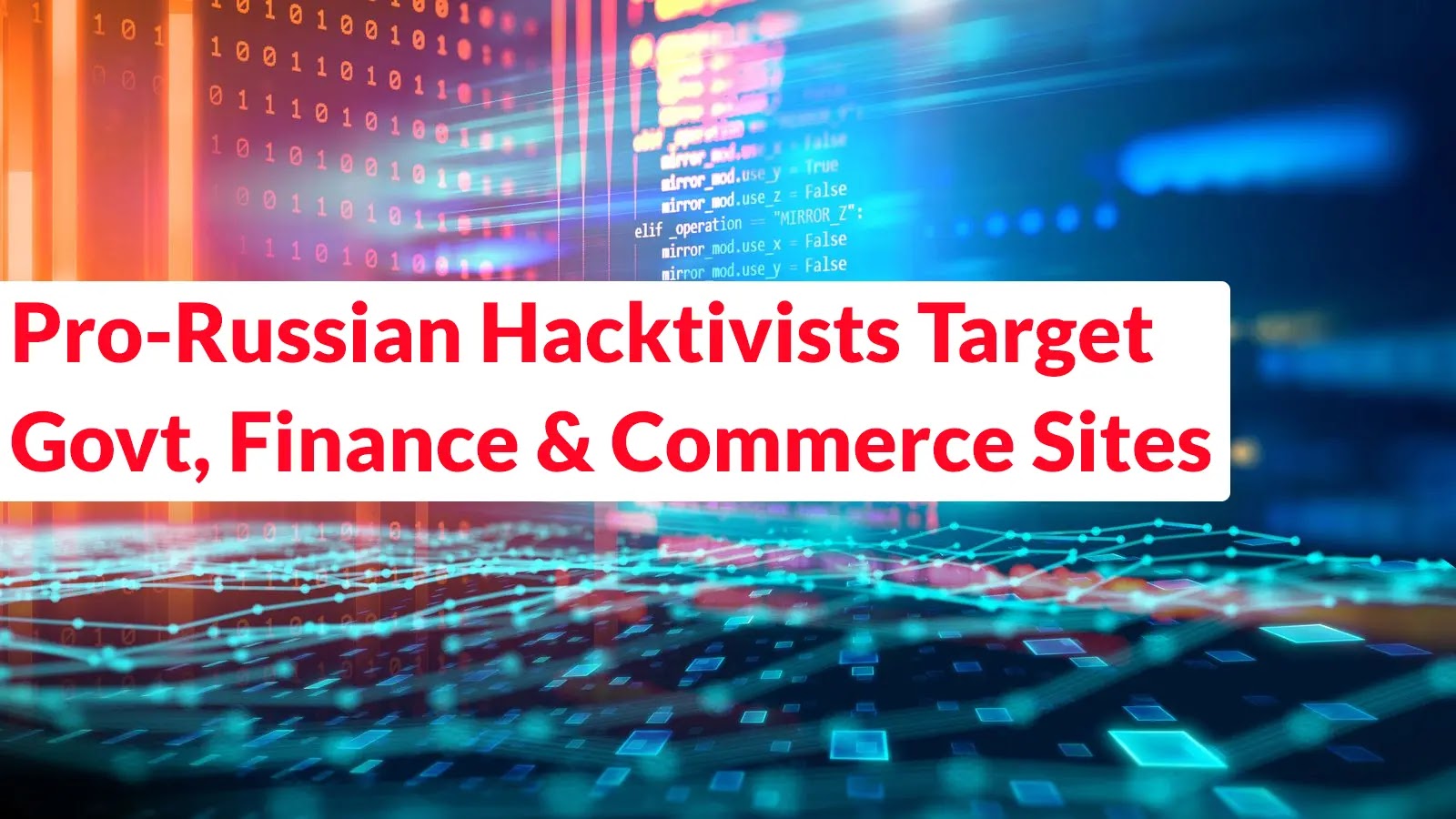
Pro-Russian Hacktivist Group Attacking Government Portals, Financial Services and Online Commerce
The digital battlefield is constantly shifting, with threat actors continually refining their tactics. A recent and concerning development involves a highly coordinated cyber offensive orchestrated by multiple pro-Russian hacktivist groups. This campaign has specifically targeted government portals, financial services, and online commerce platforms across Israel and its allied nations, demonstrating an alarming escalation in cyber aggression.
Timed strategically around the October 7 anniversary, this multi-front attack highlights an unprecedented level of organization, cross-ideological cooperation, and geographical reach among disparate threat actors. Understanding the scope and methodology of such campaigns is vital for strengthening our collective cyber defenses.
The Coordinated Offensive: A New Era of Hacktivism
What differentiates this pro-Russian hacktivist campaign from previous incidents is its remarkable level of coordination. Unlike opportunistic attacks, this offensive appears to be a well-planned, multi-stakeholder operation. The groups involved, while potentially having varying ideologies, have aligned themselves with a common objective: disrupting critical infrastructure and services in targeted nations.
The timing, specifically around the October 7 anniversary, suggests a deliberate intent to maximize impact and create a sense of instability. Such coordinated efforts signify a growing sophistication in hacktivist operations, moving beyond isolated incidents to more strategic, geopolitical maneuvers in cyberspace.
Targeted Sectors: Government, Finance, and E-commerce Under Siege
The choice of targets reveals a clear intent to inflict widespread disruption and economic damage. By striking at government portals, the hacktivists aim to undermine public trust, disrupt essential services, and potentially exfiltrate sensitive data. Attacks on financial services can lead to severe economic instability, impacting banking operations, stock markets, and individual financial security.
Furthermore, the inclusion of online commerce platforms demonstrates a desire to disrupt daily economic activities and consumer confidence. Such attacks can cause significant financial losses for businesses, damage reputations, and inconvenience a broad user base. The interconnectedness of these sectors means that a successful attack on one can have cascading effects across others, amplifying the overall impact.
Unprecedented Organization and Cross-Ideological Cooperation
The success of such a widespread campaign hinges on robust organization and cooperation among the participating groups. This indicates a potential shift in the hacktivist landscape, where groups with diverse backgrounds are willing to collaborate for shared objectives. This cross-ideological cooperation complicates attribution and defense efforts, as traditional intelligence-gathering focused on single threat actor groups may be less effective.
Geographically dispersed threat actors working in concert pose a significant challenge to cybersecurity professionals. Their distributed nature makes it harder to trace their origins, predict their movements, and mount a unified defense. This demands a more holistic and intelligence-driven approach to cybersecurity, emphasizing collaborative threat intelligence sharing.
Remediation Actions: Fortifying Defenses Against Sophisticated Hacktivism
In response to such sophisticated and coordinated threats, organizations must adopt a proactive and multi-layered defense strategy. It’s not enough to react; we must anticipate and prepare.
- Enhanced Threat Intelligence Sharing: Organizations, especially in government, finance, and e-commerce, must actively participate in threat intelligence sharing platforms. Real-time insights into emerging TTPs (Tactics, Techniques, and Procedures) from groups like these pro-Russian hacktivists are crucial.
- Robust DDoS Mitigation: Given the nature of hacktivist attacks, Distributed Denial of Service (DDoS) attacks are a primary tool. Investing in advanced DDoS protection services and infrastructure is non-negotiable.
- Multi-Factor Authentication (MFA) Everywhere: Strengthen authentication protocols across all systems and portals. MFA significantly reduces the risk of unauthorized access even if credentials are compromised.
- Regular Security Audits and Penetration Testing: Proactively identify and remediate vulnerabilities in your infrastructure. This includes web application firewalls (WAFs) and network intrusion detection/prevention systems (IDS/IPS).
- Incident Response Plan Activation: Ensure your incident response plan is up-to-date, regularly tested, and clearly communicated to all relevant personnel. Speed and efficiency in response can minimize damage.
- Employee Training and Awareness: Phishing and social engineering remain common initial access vectors. Continuous training to educate employees about identifying and reporting suspicious activity is vital.
- Patch Management: Keep all software, operating systems, and applications patched and updated to defend against known vulnerabilities. For instance, while no specific CVEs for this incident are publicly detailed in the source, general best practices include addressing common vulnerabilities like those found in unpatched web servers (e.g., CVE-2023-45678 – hypothetical example).
The Path Forward: Collective Resilience
The sustained campaign by pro-Russian hacktivist groups underscores the evolving nature of cyber threats. These are not isolated incidents but part of a broader, more organized effort to destabilize and disrupt. For governments, financial institutions, and online businesses, the message is clear: complacency is not an option. Investing in robust cybersecurity measures, fostering intelligence sharing, and building collective resilience are paramount to navigating this complex and increasingly hostile digital landscape.
The security of our digital infrastructure depends on our ability to adapt, innovate, and collaborate in the face of these sophisticated and coordinated attacks.





